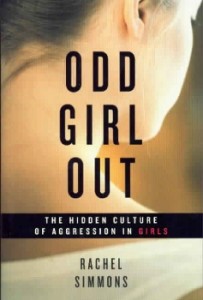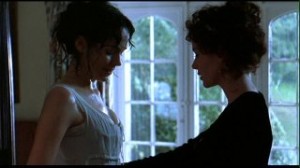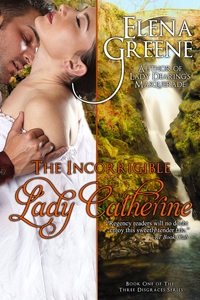 Sometimes as a parent, I need to read books like this one: Odd Girl Out: The Hidden Culture of Aggression in Girls by Rachel Simmons, which addresses the covert bullying many girls partake in lieu of more overt, physical bullying which is more common in boys. Simmons explains that in many segments of our society where girls are still expected to be “nice” (while boys are encouraged to be competitive), girls do not develop healthy ways to be competitive or healthy and straightforward strategies for resolving conflicts. Instead, they develop alternative forms of aggression: manipulative “friendships”, shunning, gossip, etc.., often carried out under a veneer of “niceness”.
Sometimes as a parent, I need to read books like this one: Odd Girl Out: The Hidden Culture of Aggression in Girls by Rachel Simmons, which addresses the covert bullying many girls partake in lieu of more overt, physical bullying which is more common in boys. Simmons explains that in many segments of our society where girls are still expected to be “nice” (while boys are encouraged to be competitive), girls do not develop healthy ways to be competitive or healthy and straightforward strategies for resolving conflicts. Instead, they develop alternative forms of aggression: manipulative “friendships”, shunning, gossip, etc.., often carried out under a veneer of “niceness”.
Although many of the cases described are saddening, Simmons doesn’t demonize the aggressors, pointing out that roles often change and that the aggressors’ behavior is rooted in insecurity and the fear of being excluded themselves. There is a high price paid by those who are part of the “in” clique.
On a personal level, I found Simmons’s insights useful, along with some of her suggestions for parents and schools. It also shed some light on behaviors I’ve seen in adult groups that are predominantly female. Not everyone outgrows this stuff.
As a writer, I also found the book interesting in light of fiction and character development.
 Diane’s recent post, Mansfield Park Revisited had me thinking about how Jane Austen depicted alternative female aggression in her books. Clearly, it’s not a new phenomenon. Ladies of the gentry and aristocracy were certainly expected to be “nice” so alternative aggression likely flourished. One can see it in the relationship between Caroline Bingley and Jane Bennett in Pride and Prejudice, in the friendship of Catherine and Isabella in Northanger Abbey and definitely between Fanny and Mary in Mansfield Park.
Diane’s recent post, Mansfield Park Revisited had me thinking about how Jane Austen depicted alternative female aggression in her books. Clearly, it’s not a new phenomenon. Ladies of the gentry and aristocracy were certainly expected to be “nice” so alternative aggression likely flourished. One can see it in the relationship between Caroline Bingley and Jane Bennett in Pride and Prejudice, in the friendship of Catherine and Isabella in Northanger Abbey and definitely between Fanny and Mary in Mansfield Park.
Here’s an image from the infamous scene with lesbian undertones in the 1999 version of Mansfield Park. Although I’ll agree with critics that I never saw anything like that in the book, it does fit in with the model of manipulation, the pressure for the victim to tolerate behavior that makes her uncomfortable, with the underlying threat of loss of friendship.
My second full length Regency romance, The Incorrigible Lady Catherine, was the beginning of my “Three Disgraces” trilogy with heroines who met at boarding school and who, for various reasons, didn’t fit in and formed their own defensive alliance. So I’ve played with this issue before in my writing, although at the time of writing, I certainly didn’t understand the aggressors as well as Jane Austen must have.
Have you read other books, romance or not, where the concept of alternative aggression was used effectively?
 To celebrate the recent release of The Incorrigible Lady Catherine in paperback, I’ll give away one copy to a random commenter. Comment by next Thursday (1/17) and I will announce the winner on Friday (1/18).
To celebrate the recent release of The Incorrigible Lady Catherine in paperback, I’ll give away one copy to a random commenter. Comment by next Thursday (1/17) and I will announce the winner on Friday (1/18).

No, I haven’t.
bn100candg(at)hotmail(dot)com
Off hand, I cannot think of any particular books that this was used. However, I have certainly seen it in play with girls of all ages. The most striking example was at a Girl Scout troop sleep over. I was in a neighboring room and was very disturbed by the conversations I heard. Girls tearing down others in the name of “friendship.” I made sure we discussed topics related to this behavior in following meetings. Personally, not much is worse than someone stabbing you in the back while they have a smile of friendship on their face.
I can’t think of any at the moment but I’m sure I’ve come across it before but it’s slipped my mind. I read mainly historical romance & there are always stories of the shy wallflower who is being given the cold shoulder treatment & sneered upon by the more popular girls.
I’m glad you dealt with that, Pat. So many adults don’t want to deal with it or may not notice it, since it’s less obvious than physical bullying.
Linda, I’ve definitely read those stories and it rings very true. The fact that women had fewer choices then must have made the competition for eligible husbands very fierce. But it wouldn’t have been ladylike to brawl in a ballroom, so gossip and such would have been the weapons.
Books that came to mind regarding girls’ alternative aggression are Gone with the Wind and Memoirs of a Geisha. Scarlett is a beauty and thereby is surrounded by the other ladies’ jealousy. Scarlett reacts to the jealousy she’s surrounded with by acting out and being more competitive in getting what she wants out of life. (Ashley Wilkes) Her story is full of examples of her backstabbing the girls she grew up with in order to survive in a way that she felt was successful. (using her charms to steal their husbands/fiances!)
In Memoirs of a Geisha (forgive me, I’ve forgotten all the character’s names!) our main heroine is continually put down by the current reining geisha in her house, both in violent physical ways and also through verbal abuse. Of course, such treatment only makes the main heroine stronger and more steely such that eventually she becomes the most favored of the geisha.
I would say both novels use the idea effectively to drive the stories and the characters forward in their worlds. And it appears to indicate that alternative aggression has been around a long time and crosses cultures as well.
I can’t remember I ever read books about it, but it does sound very interesting.
I read primarily historical romances and have seen incidents such as those already mentioned. Most prevalent would be making targets of the wallflower girls. It is usually the girl(s) who feel insecure that will make mean, and even untrue, remarks that could ruin another girl’s reputation.
Elena, you are a new-to-me author and I like the sound of your book and the series. I’ll be adding them to my ever growing TBR pile.
Lesley, those are some fantastic examples. I had a lot of trouble with Scarlett O’Hara; she never quite came across as heroine material to me. I wonder if I would like her better on re-reading. Your example does remind me of Susan Elizabeth Phillips’ book, Ain’t She Sweet. That heroine was so like girls who looked down on me back in school yet I did end up understanding her and rooting for her.
I think it’s wonderful how books can expand our understanding.
Karen H, agree on the characters who mistreat the wallflowers. It is rooted in insecurity; it’s cool to see if any of them change. Come to think of it, MJ Putney (Mary Jo Putney’s YA pen name) did a good job with this sort of thing in her Dark Mirror series.
I would unquestionably have been a Regency wallflower, blushing in the corner. I’m so thankful I’m old enough now not to have to deal with stuff like that!